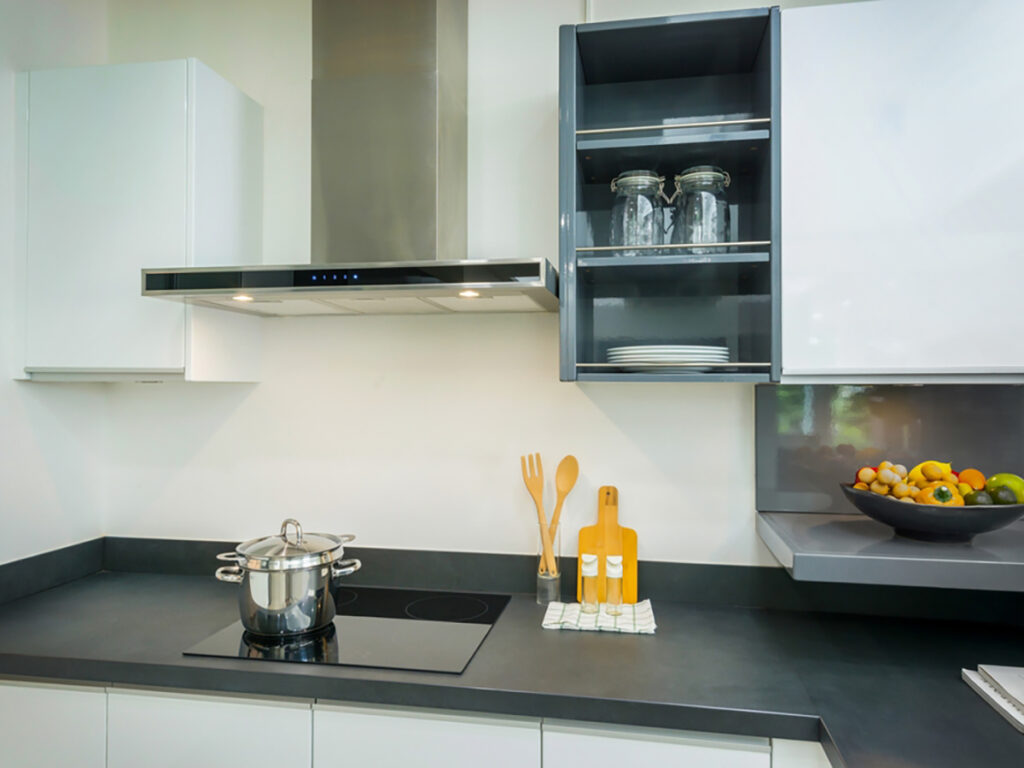The Evolution of Kitchen Chimneys: From Ancient Times to Modern Day
The humble kitchen chimney. It may seem like a simple appliance, but its journey through history is anything but. From smoky hearths to sleek, high-tech marvels, the chimney has played a vital role in shaping our culinary experiences. Today, we embark on a fascinating journey through time, tracing the evolution of this essential kitchen companion. Ancient Flames and Rising Smoke: Our story begins in the earliest days of cooking, when food was prepared over open fires. Smoke and heat posed a constant challenge, filling homes with discomfort and health hazards. The first chimneys were little more than holes in roofs, allowing smoke to escape, but offering little in the way of control or efficiency. Medieval Masonry and the Rise of Chimneys: The Middle Ages saw the rise of dedicated kitchens within homes, often featuring masonry fireplaces. These early chimneys, though rudimentary, channeled smoke more effectively, improving indoor air quality and reducing fire risks. The Renaissance of Chimneys and the Birth of Innovation: The Renaissance ushered in a new era of innovation, and chimneys were no exception. Taller and more elaborate designs emerged, often adorned with decorative elements. Improved bricklaying techniques and the invention of flues further enhanced their functionality. The Industrial Revolution and the Age of Coal: The Industrial Revolution brought about a shift in fuel sources, with coal replacing wood in many homes. This necessitated even taller and sturdier chimneys to handle the increased smoke and heat. Chimneys became a prominent feature of the urban landscape, symbolizing the power and progress of the era. The Modern Era: Efficiency, Elegance, and Beyond: The 20th century saw a dramatic transformation in kitchen chimneys. The invention of electric fans and gas stoves led to more compact and efficient designs. Materials like stainless steel and glass offered not just durability but also a touch of modern elegance. Klever Appliances: Ushering in a New Era of Kitchen Chimneys In the 21st century, Klever Appliances is at the forefront of chimney innovation. Their range of chimneys seamlessly blend cutting-edge technology with sleek aesthetics, offering features like: Powerful suction: Capture smoke, grease, and odors efficiently, ensuring a clean and comfortable cooking environment. Advanced filtration: Multi-layered filters effectively trap grease and pollutants, leaving the air fresh and breathable. Silent operation: Enjoy peace and quiet while you cook, thanks to Klever’s innovative noise reduction technology. Automatic cleaning: Some models boast self-cleaning functions, eliminating the need for manual scrubbing. Sleek and stylish designs: Klever chimneys come in a variety of styles to complement any kitchen décor. Klever Appliances kitchen chimney A Look to the Future: The future of kitchen chimneys is bright, with even more exciting developments on the horizon. Smart chimneys that integrate with home automation systems, voice-activated controls, and even air purification capabilities are just a few of the possibilities. As we’ve seen, the kitchen chimney has come a long way from its humble beginnings. From battling smoke in ancient times to enhancing our modern culinary experiences, it has been a constant companion in our kitchens. And with brands like Klever Appliances pushing the boundaries of innovation, the future of this essential appliance is nothing short of delicious. So, the next time you fire up your stove, take a moment to appreciate the humble kitchen chimney. It’s a testament to human ingenuity and a symbol of our evolving relationship with food and technology. And who knows, maybe your next Klever chimney will even be able to do the dishes! Thank you for joining us on this journey through the fascinating history of kitchen chimneys. We hope you enjoyed it!
The Evolution of Kitchen Chimneys: From Ancient Times to Modern Day Read More »




